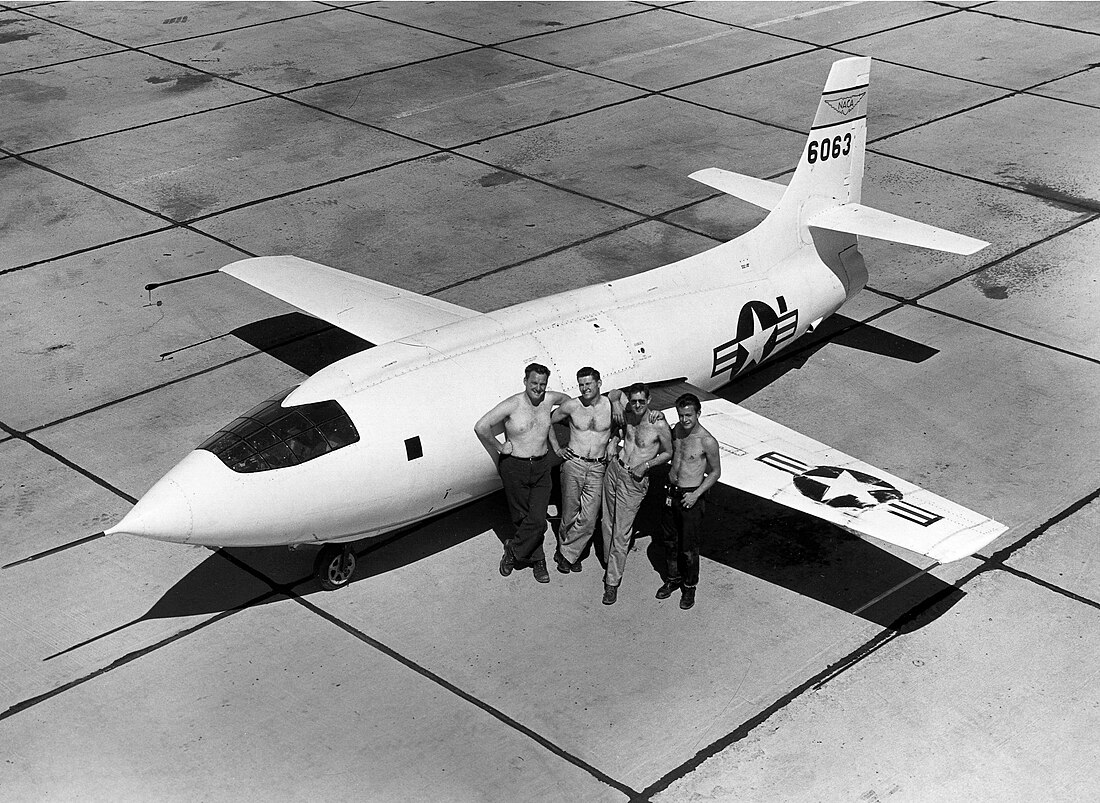| Image |
Type |
Manufacturer |
Agency |
Date |
Role |
Notes |
 |
X-1 |
Bell |
USAF, NACA |
1946 |
High-speed and high-altitude flight |
First aircraft to break the sound barrier in level flight. Proved aerodynamic viability of thin wing sections.[10] |
 |
X-1A X-1B X-1C X-1D |
Bell |
USAF, NACA |
1951 |
High-speed and high-altitude flight |
|
 |
X-1E |
Bell |
USAF, NACA |
1955 |
High-speed and high-altitude flight |
|
 |
X-2 |
Bell |
USAF |
1952 |
High-speed and high-altitude flight |
First aircraft to exceed Mach 3.[11] |
 |
X-3 Stiletto |
Douglas |
USAF, NACA |
1952 |
Highly loaded trapezoidal wing |
Titanium alloy construction. Underpowered, but provided insights into inertia coupling.[12] |
 |
X-4 Bantam |
Northrop |
USAF, NACA |
1948 |
Transonic tailless aircraft[13] |
|
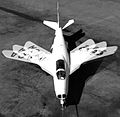 |
X-5 |
Bell |
USAF, NACA |
1951 |
variable geometry |
First aircraft to fly with variable wing sweep.[14] |
 |
X-6 |
Convair |
USAF, AEC |
1957 |
Nuclear Propulsion |
Not built. The Convair NB-36H experiment, a B-36 modified to carry (but not powered by) a nuclear reactor, flew from 1955 to 1957.[15][16] |
 |
X-7 |
Lockheed |
USAF, USA, USN |
1951 |
Ramjet engines.[17] |
|
 |
X-8 Aerobee |
Aerojet |
NACA, USAF, USN |
1949 |
Upper air research[18] |
Later models used as sounding rockets. |
 |
X-9 Shrike |
Bell |
USAF |
1949 |
Guidance and propulsion technology |
Assisted development of GAM-63 Rascal missile.[19] |
 |
X-10 |
North American |
USAF |
1953 |
SM-64 Navajo missile testbed.[20] |
|
 |
X-11 |
Convair |
USAF |
1953 |
Proposed SM-65 Atlas missile testbed.[21] |
|
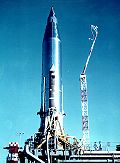 |
X-12 |
Convair |
USAF |
1953 |
Proposed SM-65 Atlas missile testbed.[22] |
|
 |
X-13 Vertijet |
Ryan |
USAF, USN |
1955 |
Vertical takeoff and landing (VTOL) |
Jet-powered tailsitting VTOL flight.[23] |
 |
X-14 |
Bell |
USAF, NASA |
1957 |
VTOL |
Vectored thrust configuration for VTOL flight.[24] |
 |
X-15 |
North American |
USAF, NASA |
1959 |
Hypersonic, high-altitude flight |
First crewed hypersonic aircraft. Capable of suborbital spaceflight.[25] |
 |
X-15A-2 |
North American |
USAF, NASA |
1964 |
Hypersonic, high-altitude flight |
Major Pete Knight flew the X-15A-2 to Mach 6.70, making it the fastest piloted flight of the X-plane program. |
 |
X-16 |
Bell |
USAF |
1954 |
High-altitude reconnaissance[26] |
"X-16" designation used to hide true purpose.[27] Canceled and never flew. |
 |
X-17 |
Lockheed |
USAF, USN |
1956 |
High Mach number reentry.[28] |
|
 |
X-18 |
Hiller |
USAF, USN |
1959 |
Vertical and/or short take-off and landing (V/STOL) |
Evaluated the tiltwing concept for VTOL flight.[29] |
 |
X-19 |
Curtiss-Wright |
Tri-service |
1963 |
Tandem tiltrotor VTOL[30] |
XC-143 designation requested but turned down.[31] |
 |
X-20 Dyna-Soar |
Boeing |
USAF |
1963 |
Reusable spaceplane |
Intended for military missions.[32] Canceled and never built. |
 |
X-21A |
Northrop |
USAF |
1963 |
Boundary layer control[33] |
|
 |
X-22 |
Bell |
Tri-service |
1966 |
Quad ducted fan tiltrotor STOVL[34] |
|
 |
X-23 PRIME |
Martin Marietta |
USAF |
1966 |
Maneuvering atmospheric reentry[35] |
Designation never officially assigned.[31] |
 |
X-24A |
Martin Marietta |
USAF, NASA |
1969 |
Low-speed lifting body[36] |
|
 |
X-24B |
Martin Marietta |
USAF, NASA |
1973 |
Low-speed lifting body[37] |
|
 |
X-25 |
Bensen |
USAF |
1955 |
Commercial light autogyro for downed pilots.[38] |
|
  |
X-26 Frigate |
Schweizer |
DARPA, US Army, USN |
1967 |
Training glider for yaw-roll coupling Quiet observation aircraft[39] |
|
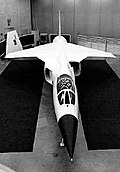 |
X-27 |
Lockheed |
None |
1971 |
High-performance fighter-derived research aircraft.[40] |
Proposed development of Lockheed CL-1200 Lancer. Canceled and never flew. |
 |
X-28 Sea Skimmer |
Osprey |
USN |
1970 |
Low-cost aerial policing seaplane[41] |
|
 |
X-29 |
Grumman |
DARPA, USAF, NASA |
1984 |
Forward-swept wing[42] |
|
 |
X-30 NASP |
Rockwell |
NASA, DARPA, USAF |
1993 |
Single-stage-to-orbit spaceplane[43] |
Canceled and never built. |
 |
X-31 |
Rockwell-MBB |
DARPA, USAF, BdV |
1990 |
Thrust vectoring supermaneuverability[44] |
|
 |
X-32A |
Boeing |
USAF, USN, USMC, RAF |
2000 |
Joint Strike Fighter[45] |
|
| X-32B |
2001 |
 |
X-33 |
Lockheed Martin |
NASA |
2001 |
Half-scale reusable launch vehicle prototype.[46] |
Prototype never completed. |
 |
X-34 |
Orbital Sciences |
NASA |
2001 |
Reusable pilotless spaceplane.[47] |
Never flew. |
 |
X-35A |
Lockheed Martin |
USAF, USN, USMC, RAF |
2000 |
Joint Strike Fighter[48] |
|
 |
X-35B |
2001 |
First in family to use VTOL. Also used unconventional mode of lift engine (lift fan). |
 |
X-35C |
2000 | |
 |
X-36 |
McDonnell Douglas |
NASA |
1997 |
28% scale tailless fighter[49] |
|
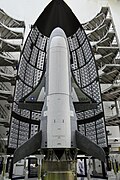 |
X-37 |
Boeing |
USAF, USSF, NASA |
2010 |
Reusable orbital spaceplane[50] |
Drop test performed in 2006. Seven flights to space since 22 April 2010 |
 |
X-38 |
Scaled Composites |
NASA |
1998 |
Lifting body Crew Return Vehicle[51] |
|
|
X-39 |
Unknown |
USAF |
|
Future Aircraft Technology Enhancements (FATE) program.[52] |
Designation never officially assigned.[31] |
 |
X-40A |
Boeing |
USAF, NASA |
1998 |
80% scale Space Maneuver Vehicle X-37 prototype.[53] |
|
 |
X-41 |
Unknown |
USAF |
|
Maneuvering re-entry vehicle.[54] |
|
|
X-42 |
Orbital Sciences |
USAF |
|
Expendable liquid propellant upper-stage rocket.[55] |
Never flew due to technical challenges.[56] |
 |
X-43 Hyper-X |
Micro-Craft |
NASA |
2001 |
Hypersonic Scramjet[57] |
|
 |
X-44 MANTA |
Lockheed Martin |
USAF, NASA |
2000 |
F-22-based Multi-Axis No-Tail Aircraft thrust vectoring[58] |
Canceled, never flew. |
 |
X-45 |
Boeing |
DARPA, USAF |
2002 |
Unmanned combat air vehicle (UCAV)[59] |
|
 |
X-46 |
Boeing |
DARPA, USN |
2003 |
Unmanned combat air vehicle (UCAV).[60] |
Naval use. Canceled, never flew. |
 |
X-47A Pegasus |
Northrop Grumman |
DARPA, USN |
2003 |
Unmanned combat air vehicle (UCAV)[61] |
Naval use. |
 |
X-47B |
Northrop Grumman |
DARPA, USN |
2011 |
UCAV |
Naval use. |
|
X-47C |
Northrop Grumman |
USAF |
|
Manned bomber |
Proposal for a new-generation strategic bomber. Design only. |
 |
X-48 |
Boeing |
NASA |
2007 |
Blended Wing Body (BWB)[62] |
|
 |
X-49 SpeedHawk |
Piasecki |
US Army |
2007 |
Compound helicopter Vectored Thrust Ducted Propeller (VTDP) testbed.[63] |
|
 |
X-50 Dragonfly |
Boeing |
DARPA |
2003 |
Canard Rotor/Wing[64] |
|
 |
X-51 Waverider |
Boeing |
USAF |
2010[65] |
Hypersonic scramjet[66] |
|
| — |
X-52 |
— |
— |
— |
— |
Number skipped to avoid confusion with Boeing B-52 Stratofortress.[31] |
 |
X-53 |
Boeing |
NASA, USAF |
2002 |
Active Aeroelastic Wing[67] |
|
|
X-54 |
Gulfstream |
NASA |
|
Low-noise supersonic transport[68] in development. |
|
 |
X-55 |
Lockheed Martin |
USAF |
2009 |
Advanced Composite Cargo Aircraft (ACCA)[69] |
|
 |
X-56 |
Lockheed Martin |
USAF/NASA |
2013 |
Active flutter suppression and gust load alleviation |
Part of the high-altitude, long-endurance (HALE) reconnaissance aircraft program.[70] |
 |
X-57 Maxwell |
ESAero/Tecnam |
NASA |
2023 |
Low emission plane powered entirely by electric motors[71] |
Part of NASA's Scalable Convergent Electric Propulsion Technology Operations Research project[71] (SCEPTOR). Cancelled in 2023, never flew. |
| — |
X-58 |
— |
— |
— |
— |
Number skipped; slot apparently assigned to Kratos XQ-58 Valkyrie.[72] |
 |
X-59 Quesst |
Lockheed Martin |
NASA |
2024 |
Quiet supersonic transport aircraft[73] |
|
 |
X-60 |
Generation Orbit Launch Services |
USAF |
|
Air-launched rocket for hypersonic flight research[74] |
|
 |
X-61 Gremlins |
Dynetics |
DARPA |
2020 |
Air-launched and air-recoverable reconnaissance unmanned air vehicle (UAV)[75][76] |
|
 |
X-62 VISTA |
Lockheed Martin/Calspan |
USAF |
2021 |
"Variable In-flight Simulator Test Aircraft" |
First flew in 1993 as the NF-16D (for the MATV program). Designated the X-62A during a major research system upgrade in 2021. Assigned to the USAF Test Pilot School.[77] |
| — |
X-63 |
ABL Space Systems |
AFRL |
2023 |
Modular aerospike engine launch vehicle testbed based on RS1. [78] |
The RS1 launch vehicle first flew on Jan 10, 2023. The launch ended in failure. [79] |
| — |
X-64 |
Invocon Inc. |
AFRL |
— |
Modular aerospike engine launch vehicle testbed[78] |
|
 |
X-65 CRANE |
Aurora Flight Sciences |
DARPA |
2025 |
"Control of Revolutionary Aircraft with Novel Effectors"[80] |
|
 |
X-66 |
Boeing |
NASA |
2028 |
Transonic truss-braced wing[81] |
|

